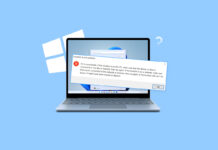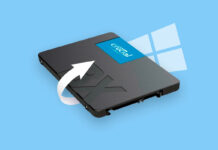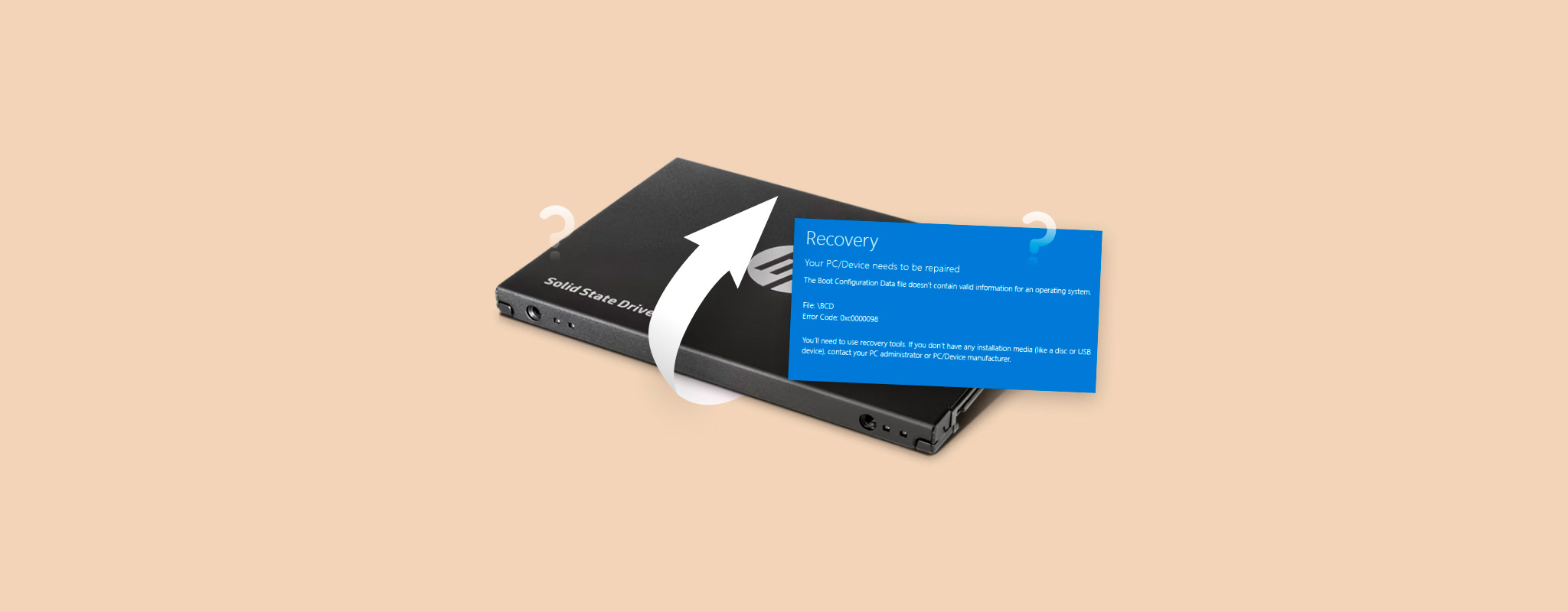 There’s never a guarantee that you’ll be able to predict SSD failure. One minute you may be copying a few files to your drive, the next your entire computer suddenly shuts down out of nowhere. This occurrence can very easily lead to data loss depending on what caused it and when it occurred.
There’s never a guarantee that you’ll be able to predict SSD failure. One minute you may be copying a few files to your drive, the next your entire computer suddenly shuts down out of nowhere. This occurrence can very easily lead to data loss depending on what caused it and when it occurred.
We’re going to explain what SSD failure is, what symptoms to look out for, and how to recover data from a failing SSD.
What is SSD Failure
SSD failure occurs when something has caused your SSD to crash. If your system drive is an SSD, your operating system will crash and you will need to restart your computer. If it’s not a system drive, your OS may start showing you messages stating that something is wrong with the drive and that it should be formatted in order to be used.
Any SSD is prone to failure. Backblaze released its annual SSD failure rates report for 2022. This report includes a table that breaks down which of their 2,906 SSDs failed from 1/1/2022 through to 12/31/2022.
From the report, here is the SSD failure rate by brand:
| Brand | Drives failed |
| Crucial | 3 drives failed. |
| Micron | 1 drive failed. |
| Dell | 0 drives failed. |
| Seagate | 20 drives failed. |
| WDC | 1 drive failed. |
However, these figures should not be used as conclusive proof of which brands are more reliable than others. For instance, consider the fact that 1,826 of the 2,906 total drives included in Backblaze’s reporting are Seagate. Since there are more Seagate drives than any others, a higher rate of drive failure is to be expected.
SSD failure is another reason why keeping a full backup schedule is highly encouraged to prevent the loss of your data.
Common Symptoms of a Failing SSD
There are so many SSD failure reasons that it’s too difficult to include them all in a single list. Instead, we’re going to look at a few common SSD failure symptoms that may point toward imminent drive failure.
The below symptoms will help you understand how to tell if an SSD is failing in Windows 10/11.
Symptom 1: OS Fails to Boot
When your operating system is stored on an SSD that is starting to fail, your system may no longer boot. Instead, you’ll encounter error messages relating to what caused the SSD to fail. For example, in the case of M.2 SSD failure that contains your Windows OS, you may be prompted with the error code 0xc0000225 which indicates that the Windows Boot Manager cannot find the necessary boot files.
Symptom 2: Slow Performance
The NAND memory cells on your SSD are where your data is stored. Unlike hard drives, they have a limited number of write cycles. As a NAND memory cell nears its maximum number, you will experience degraded performance. SSDs use wear-leveling algorithms to evenly distribute write cycles across memory cells, but this won’t help if all memory cells are approaching their limit.
Symptom 3: Frequent Freezing or Crashes
Frequent freezing and crashes can occur due to a physical issue with the SSD. Bad blocks, electrical issues, and controller failure are all physical problems that point towards a failing SSD. Overheating due to a lack of airflow is another very common problem that can lead your SSD freezing and crashing.
Symptom 4: S.M.A.R.T. Errors
Your solid-state drive’s S.M.A.R.T. (Self-Monitoring, Analysis, and Reporting Technology) data records useful information about the health of your drive. Reading the S.M.A.R.T. data using a program like CrystalDiskInfo may reveal a S.M.A.R.T. error. For example, your SSD may have a high RAW Read Error Rate, which could be a sign of NAND cell degradation or component failures.
Symptom 5: Failure to Read or Access Specific Files
Storage SSDs may encounter problems like file system corruption, in which case any attempt to access the data stored on the drive is met with an error message. Some data may also become unavailable due to the sudden increase in physical bad blocks on the drive. If these problems aren’t addressed quickly, your data may end up becoming unrecoverable.
How to Recover Data from Failing SSD
Once you start noticing symptoms that point towards SSD failure, you should move the data across to a healthy drive immediately. Time is of the essence, as there’s no telling when your SSD’s condition will become so bad that it no longer boots.
You could move everything across manually, but this leaves room for error and it takes a long time to do. Furthermore, it puts a lot of stress on the drive, and you’re only able to back up existing data. Instead, we suggest you create a byte-to-byte image of your failing SSD. An image backup includes everything on your disk, including hidden system files and any data that was deleted but still recoverable.
To do this, we recommend the SSD data recovery tool Disk Drill. It includes a free Drive Backup feature that can make a byte-to-byte copy of your SSD. You can also use the software to scan the image file and safely recover any data that was deleted from the failing SSD.
You will need a Disk Drill PRO license to recover any data above the 500 MB trial limit provided by the free version.
First, we’re going to show you how to create a byte-to-byte image using Disk Drill:
- Download and open Disk Drill.
- Click Drive Backup.
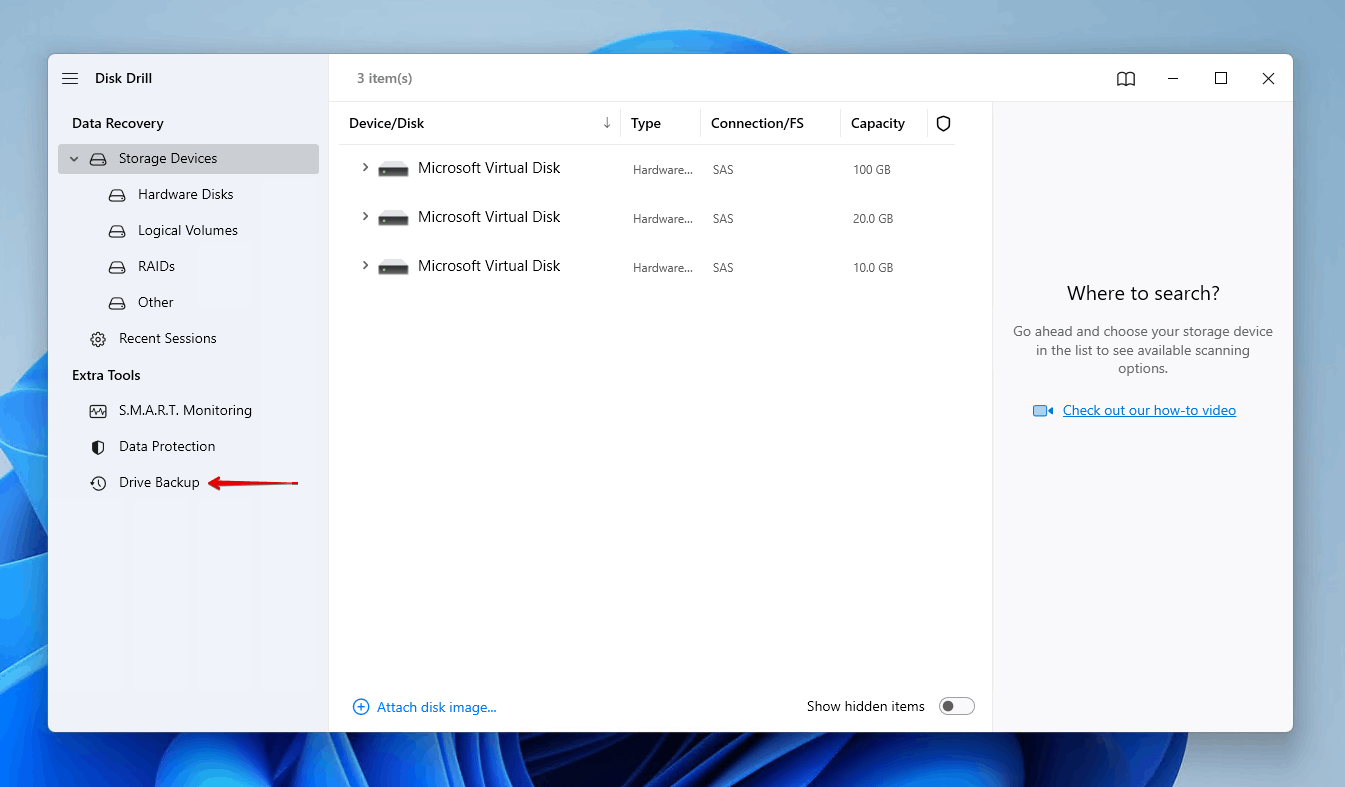
- Select the failing SSD and click Byte-to-byte Backup.
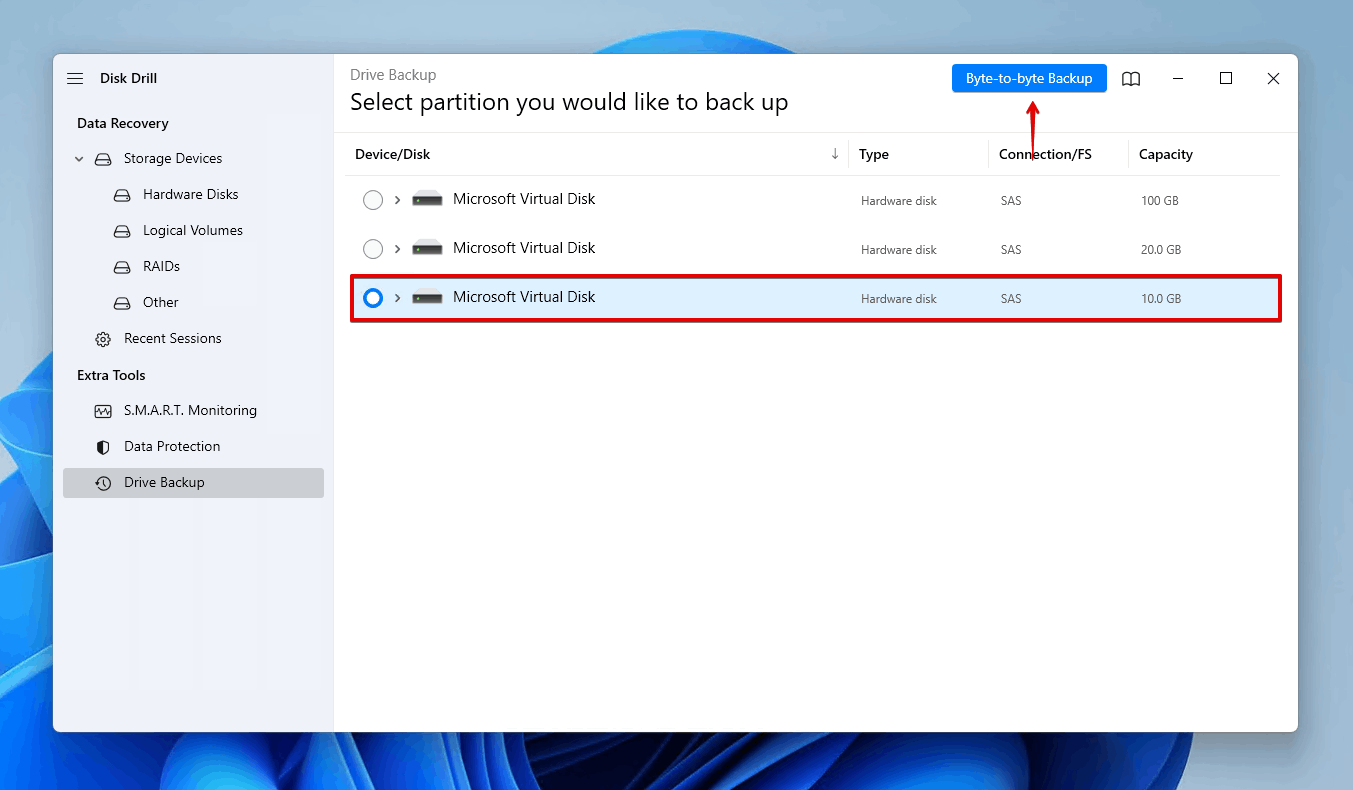
- Specify the backup parameters and click OK.
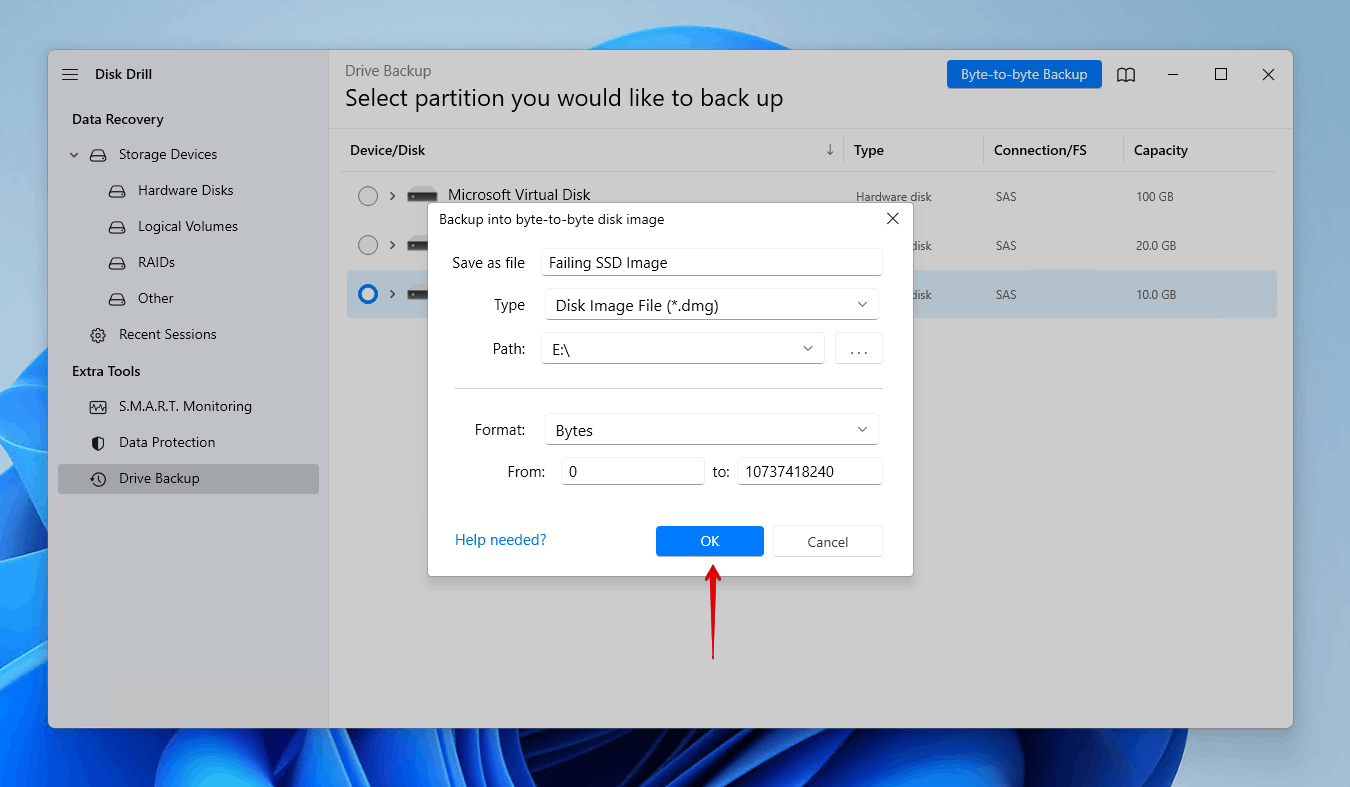
Now that you have your image, you can follow these steps if you want to recover existing or deleted data from the image file using Disk Drill:
- In Storage Devices, click Attach disk image and assign your image file.
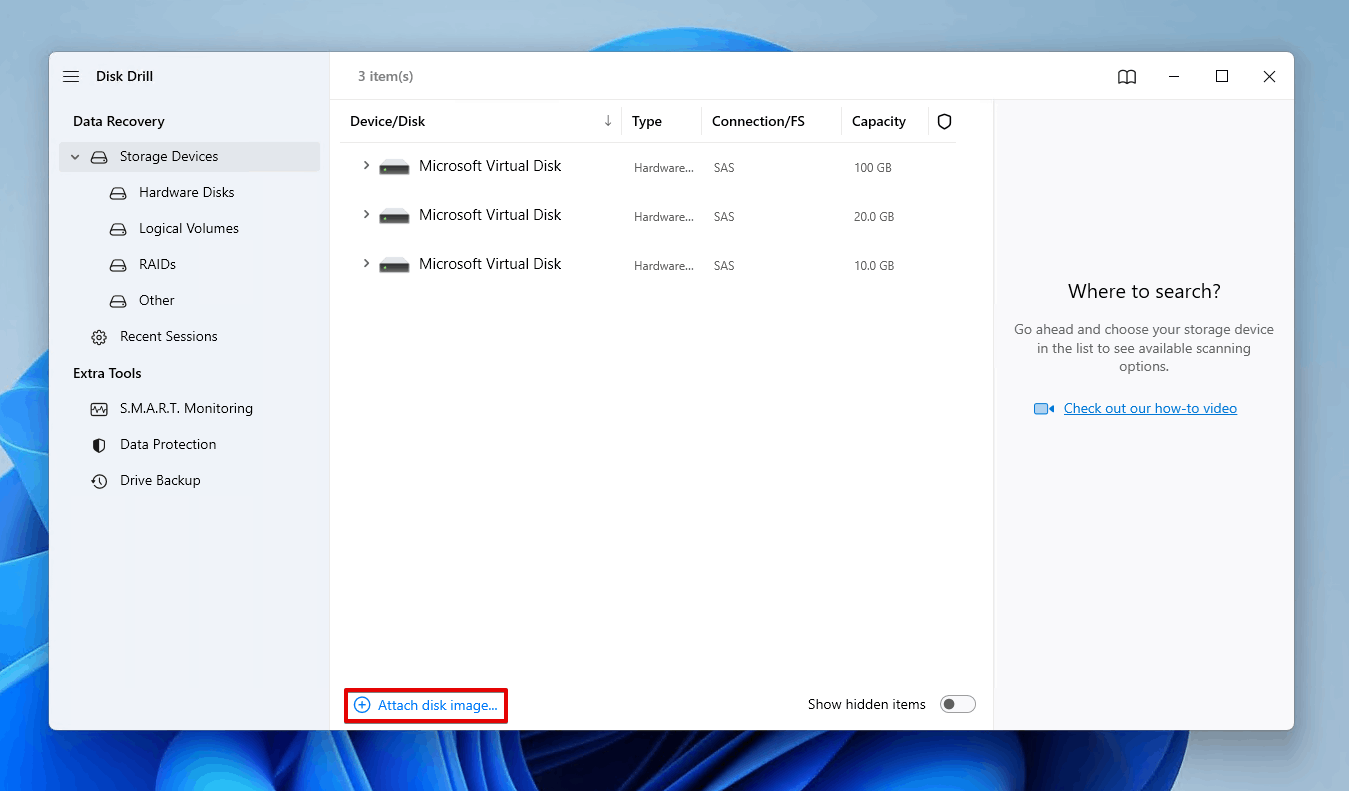
- Select the image and click Search for lost data.
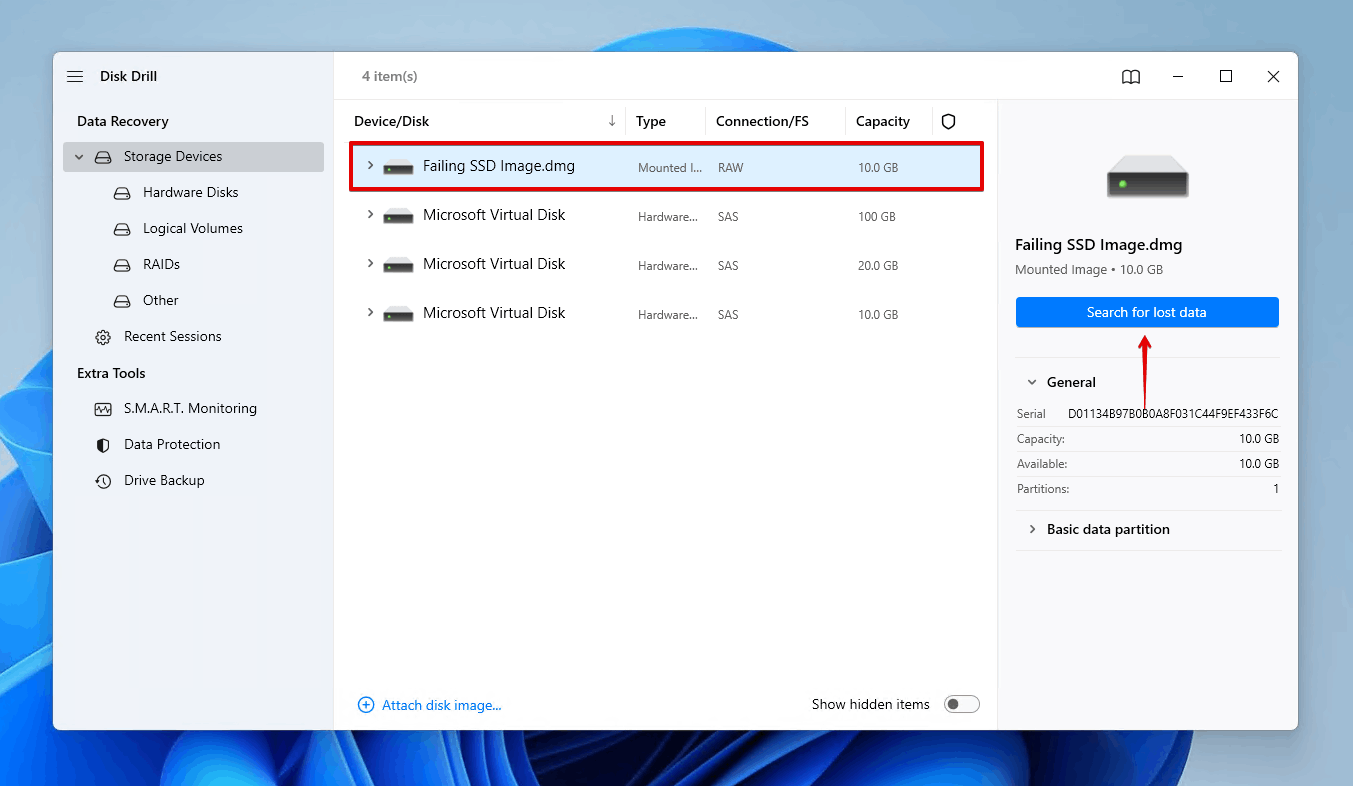
- Click Review found items. Or, if you want to recover all existing and deleted data from the failing SSD, click Recover all instead.
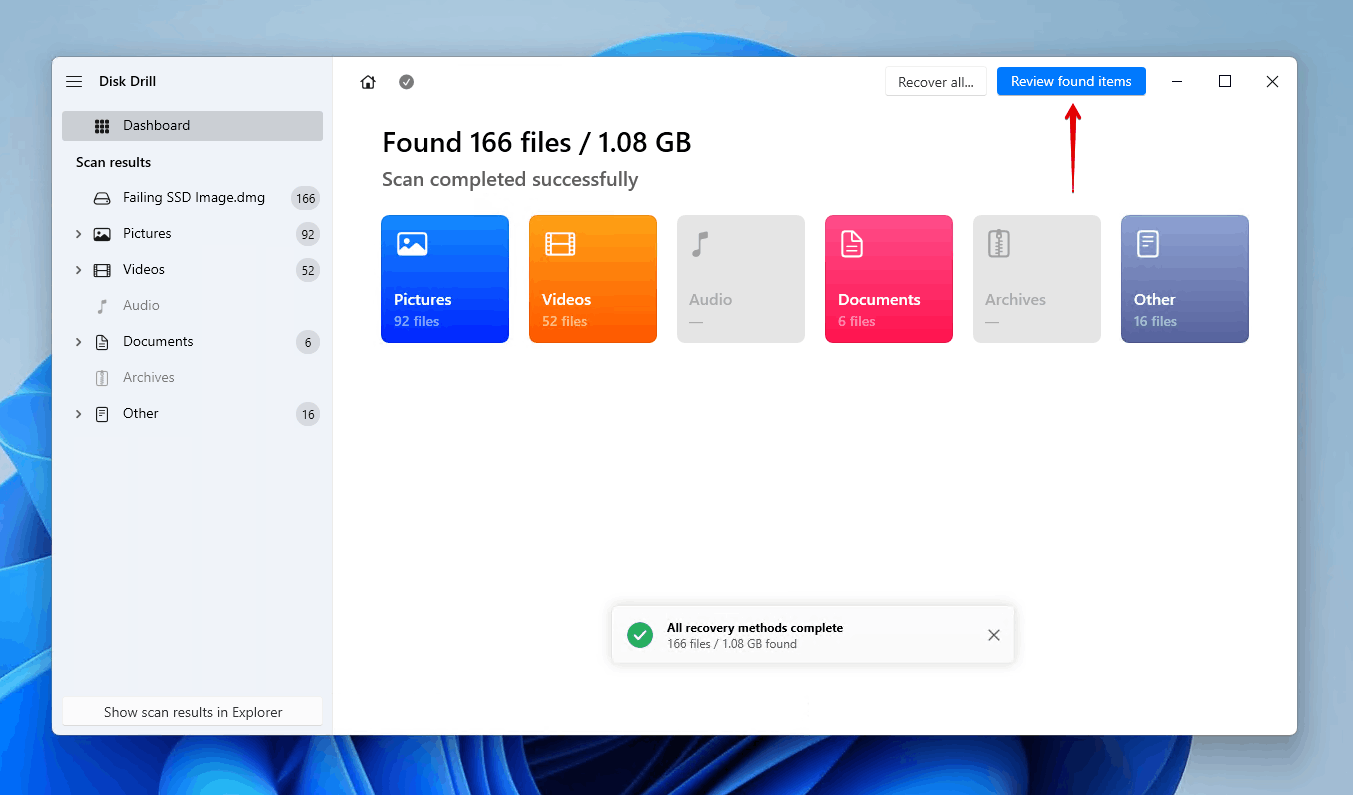
- Select the data you wish to recover. Existing data can be found under the Existing dropdown section, whereas deleted data will be in the Deleted or lost and Reconstructed dropdowns. When you’re ready, click Recover.
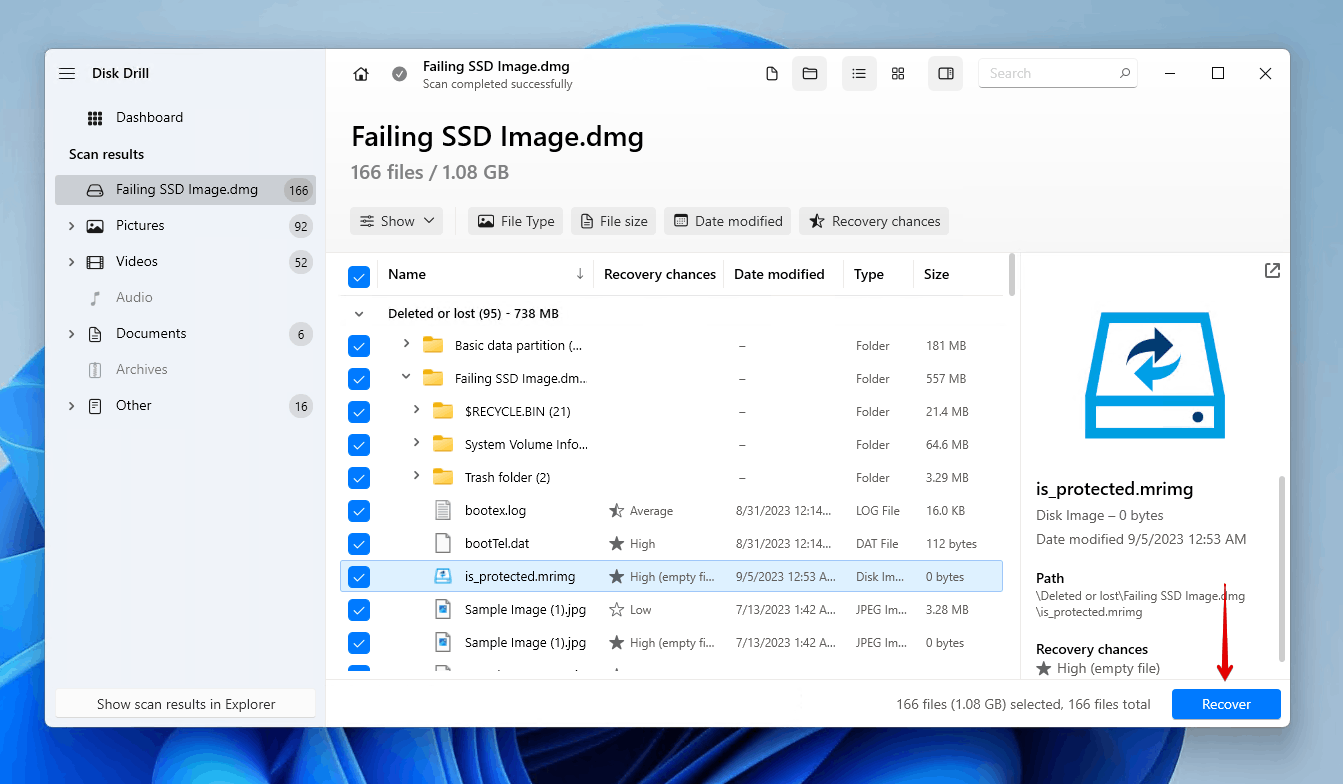
- Select a safe location for recovery and click Next.
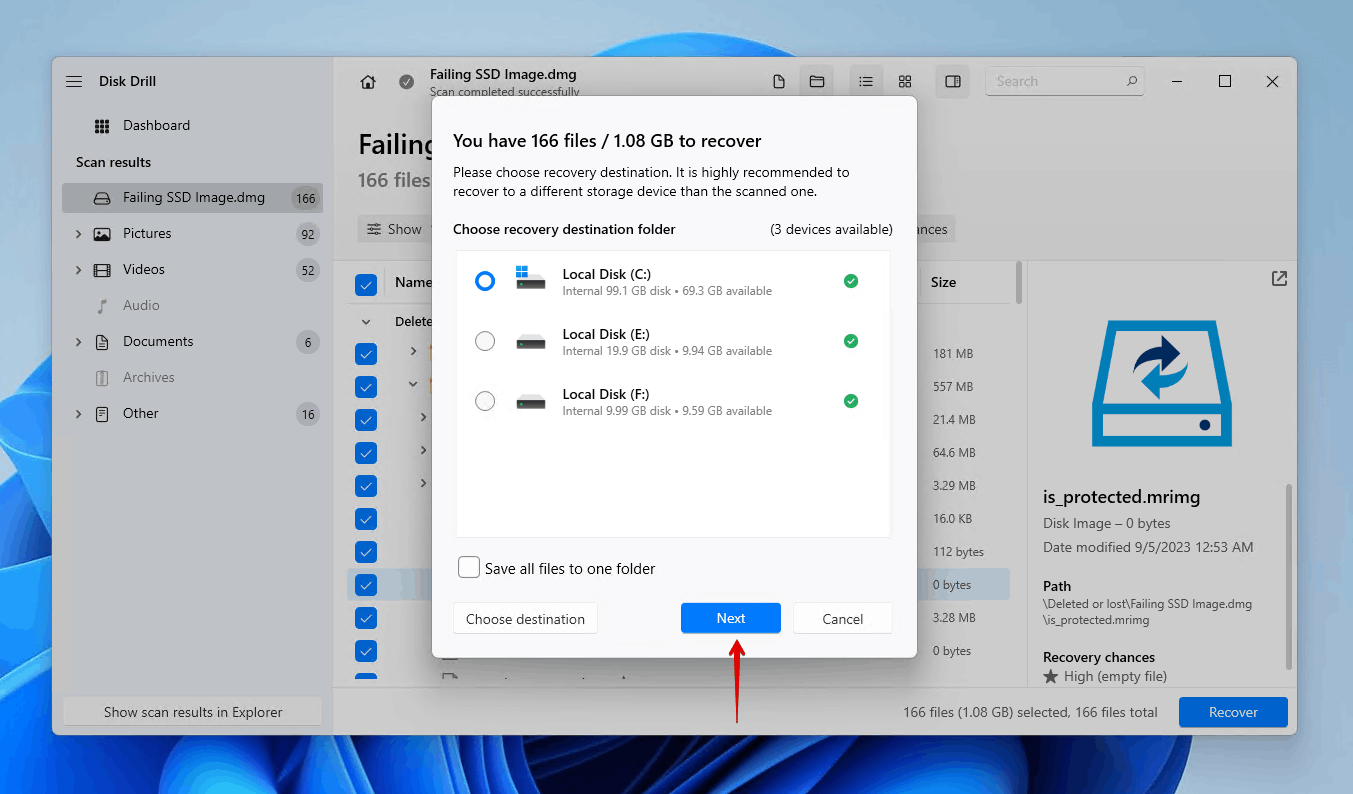
Conclusion
SSDs can begin failing for a number of reasons. As SSD failure starts to occur, you’ll begin experiencing a range of issues, like boot problems, degraded performance, freezing, recurring crashes, S.M.A.R.T. errors, and file access problems.
When you notice symptoms of SSD failure, it’s imperative that you move your data across to a healthy drive. You can do this manually, or using a third-party tool like Disk Drill. If your SSD has already failed, you’ll need to recover data from the SSD as soon as possible or you risk it becoming lost forever.

